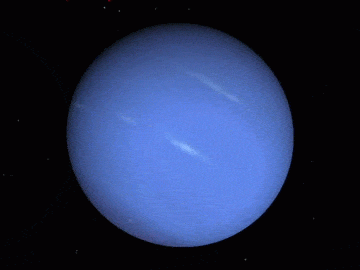Saturn
 |
| [1] Saturn |
Otherwise known as the ringed planet, Saturn is a very unique and special planet within our solar system. First discovered in the 8th century, this planet is estimated to be approximately 4.503 billion years old and is the second largest planet within our solar system measuring 116,460 km (or 72364.889 miles) in diameter. It is considered to be the flattest planet within the solar system with "its polar diameter being 90% of its equatorial diameter...due to its low density and fast rotation" [2] and due to the fact that this planet has the "second-shortest day of any of the solar system's planets" [2]. As a gas giant, Saturn is mostly "composed of 96% hydrogen, 3% helium, and 1% various trace elements that include methane, ammonia, ethane, and hydrogen deuteride" [3] meaning a solid surface of the planet is not definite. The video below helps to give a brief overview of the characteristics of this gas giant:
With an average distance of 9.58 AU (or 1,426,666,422 km) from the sun, Saturn is one of the coldest planets within the solar system averaging a temperature of just -178 degrees Celsius. Interestingly, this relatively low temperature of Saturn is suspected by astronomers to have contributed to the formation of its seven ring groups, where there are "four main groups of rings and three fainter, narrower ring groups" [5]. The famous Voyager spacecraft missions that both launched in 1977 flew relatively close to Saturn between 1980 and 1981 and discovered that "these seven ring groups were actually made up of thousands of smaller rings" [5] too. The seven ring groups of Saturn are suspected to be "made up of billions of particles in size from tiny grains of dust to objects as large as mountains [2] and are mostly composed of rocks and ice which came from chunks of asteroids/comets that were pulled together by the planet's gravitational pull. Another interesting fact about Saturn is has 82 moons, more than any other planet within our solar system with Rhea and Titan being the largest known. Titan for example is larger than our moon here on Earth and is "composed mostly of water ice and rock" [2]. Scientists believe that due to Titan having "lakes of liquid methane and landscapes covered with frozen nitrogen" [2], that it could "be a possible harbour for life, but not Earth-like" [2]. For astronomers the planned 'Titan Saturn System Mission' between 2020 to 2029 is expected to give a better insight into the functions and evolution of both Saturn and its moon and will hopefully help astronomers understand more about the planet.
References:
[1] gfycat.com. [2017]. Saturn Rotating GIF. [Online] Available at: https://gfycat.com/victoriouscraftyallosaurus-rotating-saturn [Last Accessed 21/10/2020].
[2] spacefacts.com. [n.d.]. Saturn Facts. [Online] Available at: https://space-facts.com/saturn/ [Last Accessed 24/10/2020].
[3] Coffey, J. [2008]. What is Saturn Made Of?. [Online] Available at: https://www.universetoday.com/15301/what-is-saturn-made-of/ [Last Accessed 24/10/2020].
[4] National Geographic. [2017]. Saturn 101 / National Geographic. [Online] Available at: https://www.youtube.com/watch?v=epZdZaEQhS0 [Last Accessed 24/10/2020].
[5] coolcosmos.ipac.caltech.edu. [n.d.]. How many rings does Saturn have?. [Online] Available at: https://coolcosmos.ipac.caltech.edu/ask/110-How-many-rings-does-Saturn-have-#:~:text=Saturn%20has%20four%20main%20groups,of%20thousands%20of%20smaller%20rings. [Last Accessed 24/10/2020].


Favourite of mine too! Excellent research on this once again.
ReplyDelete